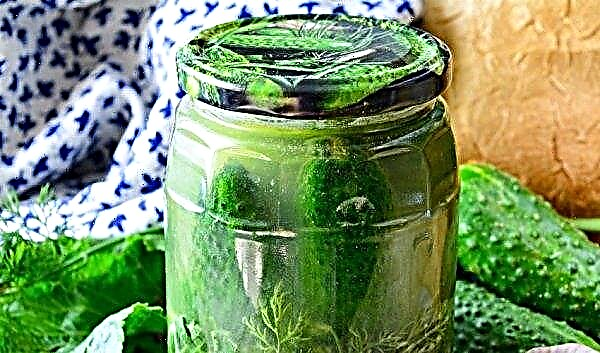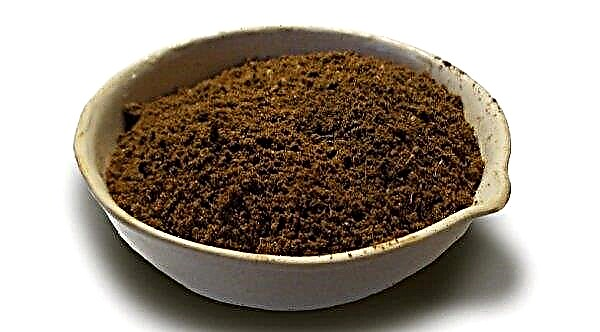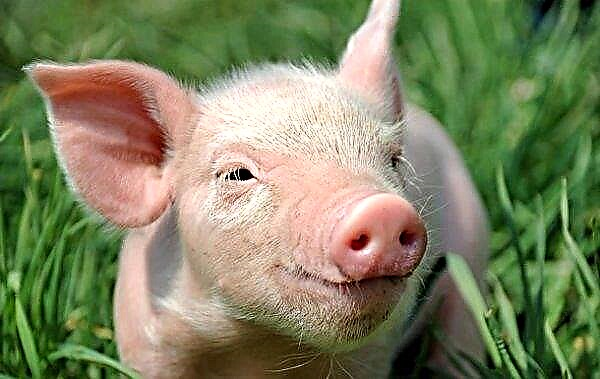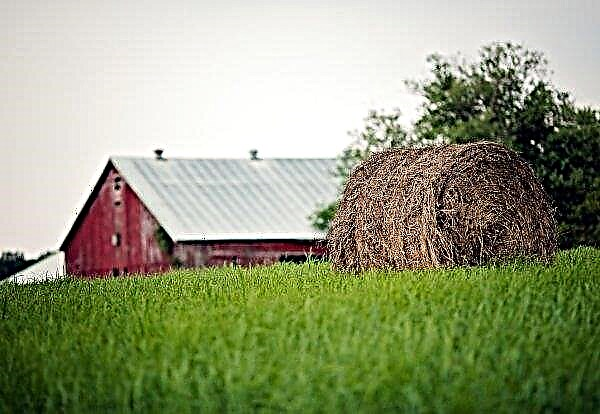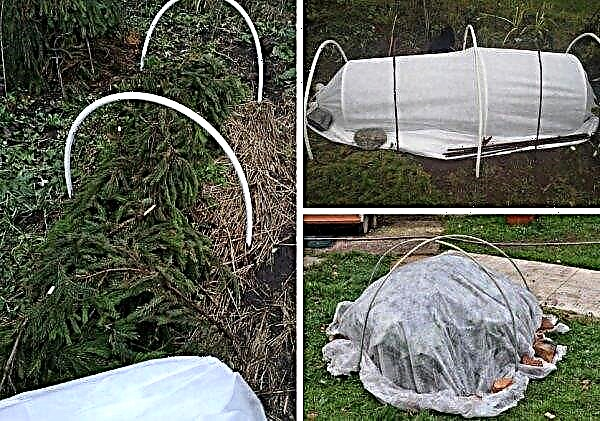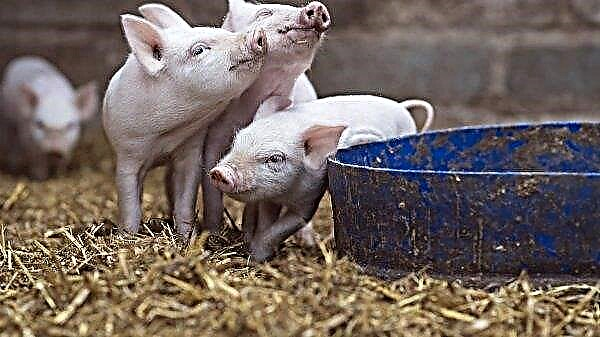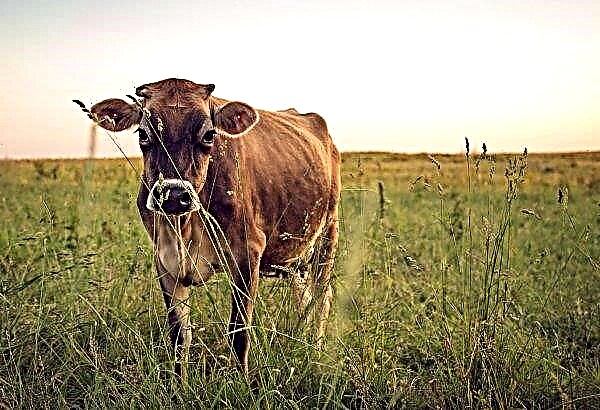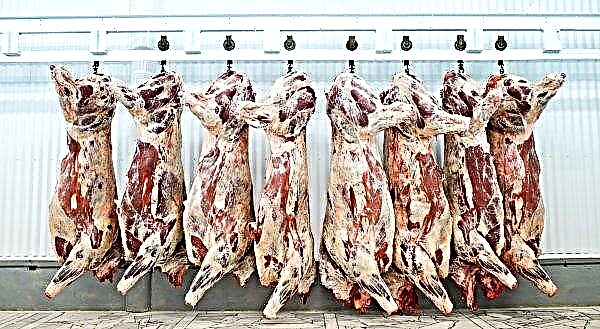A shrub of koleriya among flower growers is rare. Despite the fact that this plant is quite exotic, and also blooms for several months, only experienced plant growers decide to breed it. This is due to the fact that he needs painstaking care and daily attention. This article will describe in detail how a novice grower can successfully grow a coloration, with minimal expense of money and energy.
Botanical description of the plant
The koleriya flower belongs to the family of herbaceous perennials Gesneriaceae. In the natural environment, this plant lives in warm, moderately moistened regions of Central America, Mexico, Colombia and on the island of Trinidad. Despite the southern roots, this species is quite unpretentious in temperature and humidity.
Did you know? Kohleria was discovered in the 19th century by a Swiss scientist and biologist Kohler. In honor of the discoverer, the plant got its name.
| Morphological features | Description |
| Root system | core, rhizome forms a powerful and thick scaly root-tuber |
| Leaf shape | slightly elongated, ovoid |
| Leaf color | saturated dark green, olive shade (in some varieties red veins may appear on the leaf) |
| Flower shape | bell-shaped, oblong |
| Flower color | varied, from white and red-orange shades with pink spots and strokes to brown tones with white dots |
| Fruit shape | round |
| Fruit color | shades of olive or brown |
| Stem | branched, in natural conditions grows up to 1.5 m, in indoor - about 20-30 cm; the lower part of the stem is woody, the upper part is grassy |
Main varieties
Coleria is striking in variety. Today, a huge number of all kinds of varieties is known, which differ not only in the bright color of the flowers, but also in the shape of the bush. In addition, there are often specimens that differ in velvet leaves or pubescence of all kinds of colors.
The most popular flower varieties:
- Ampallang - the flowers of the variety have a rare shade of fuchsia, which is decorated with small purple spots. Dark veins clearly stand out on the leaves of the plant.

- Fluffy - A distinctive feature of the variety is the increased velvety of flowers and green mass. The fluffy-flowered colony has large flowers of red or dark orange color, complemented by yellow dots in the lower part.

- Queen Victoria - the flowers in this variety are similar to small tubes. Their inner part is white, with dark pink stripes and a white border, and the outer one is a delicate pink tint.
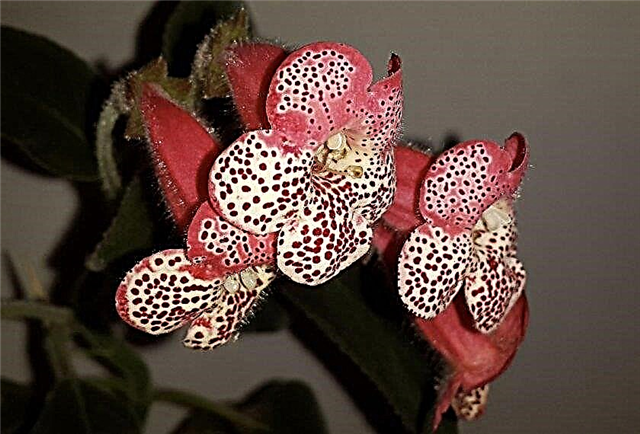
- Linden - representatives of the variety are distinguished by velvety dark green leaves covered with silver fluff, as well as lilac flowers on the outside and white inside.
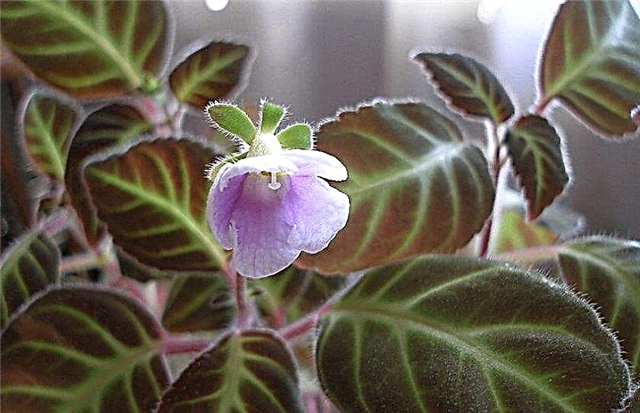
- Bibby - one of the brightest varieties. It has large white flowers, with a yellow throat and cherry dots. Saturated green leaves complement them, covered with pubescence.

- Flashdens- this plant has a large coral flower with pink stripes, it is complemented by straws and pale yellow petals.

- Bogotskaya - The plant consists of small buds of scarlet color, covered with numerous hairs. The inner part of the inflorescence has a bright orange hue, with small red dots.

- Red - This color has small sizes and small flowers, saturated red or dark red.

- Varshevich - It is distinguished by large motley flowers of a pink hue, complemented by light green petals and a straw, covered with numerous cherry blotches.
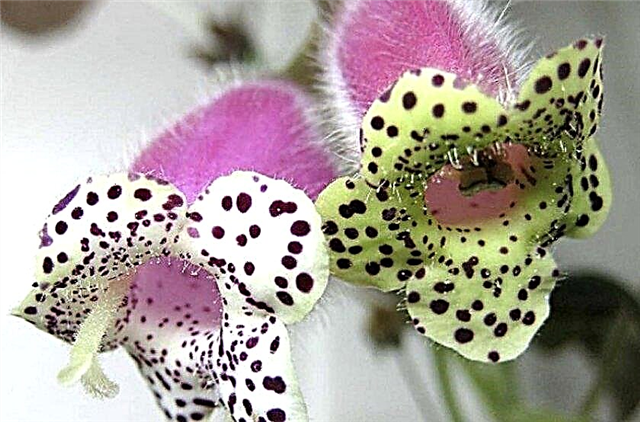
- Majestic (Magnifica) - It affects the variety with huge flowers resembling bells. They have a red-burgundy color, complemented by red splashes. Also, the variety is distinguished by green leaves covered with an ornament resembling a quilt. On the underside, the leaves are covered with white hairs.
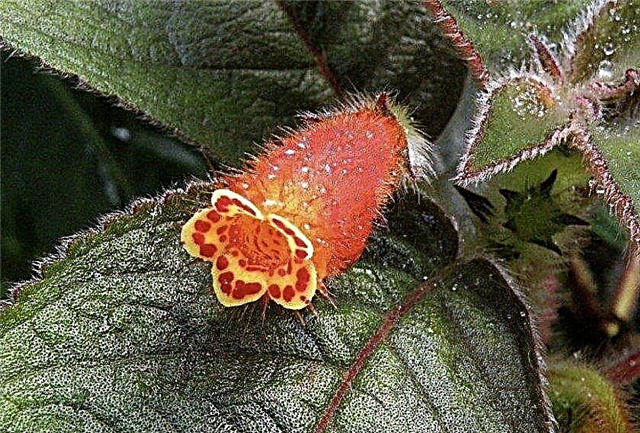
- Tubal flowered - the variety is characterized by elongated tubular flowers, orange tone. They are elegantly complemented by a pharynx with a characteristic line drawing, while the leaves have a bright and saturated green color.

Microclimate
In order to achieve a bright and long flowering plant, it is necessary to create optimal conditions for the color. But, many beginning flower growers neglect this requirement, as a result of which the pet is often sick, and in advanced cases it dies. Therefore, for the color scheme, it is necessary to create the necessary lighting, temperature and water conditions.
Location and Lighting
Home colors belong to the heat-loving and photophilous representatives of the flora. Best of all, a flower grows and develops in places with intense but scattered light. Long-term exposure to direct sunlight is undesirable for the plant, as this can cause thermal burns of delicate foliage or flowers. The window sills in the eastern or western side are considered the best place for a colliery. During dormancy, flowerpots can be transferred to the unlit parts of the house, but to activate the spring vegetation, they must be placed in their former place.
Temperature and humidity
The plant is able to stably tolerate temperature jumps throughout the day. Despite the southern roots, it is able to develop at a temperature of + 10 ° C, but prolonged decline in the indicator to + 5 ° C and lower is fatal for it. In this case, the optimum temperature for the content of the flower is considered to be a range within +20 ... + 25 ° С.
Kolerii respond well to humid air, but grow well and at low humidity. At the same time, it is forbidden to spray the flower, this is due to the fact that its villi are able to retain moisture, and this is the best condition for putrefactive lesions. Therefore, they irrigate the air away from the plant or install small containers of water near the pot.
Important! Koleriya does not tolerate drafts, so it is necessary to ventilate the premises where it lives with caution. Otherwise, the plant may die.
Home Care
In addition to the equipped microclimate, appropriate care will be required. The plant needs not only to properly water and feed, but also to ensure timely transition to the dormant phase. Otherwise, the next flower generation will be weak, with low immunity to adverse factors.
Watering
During the active growing season (early spring - late autumn), the plant needs to create regular watering. On average, the color is watered about 1-2 times a week so that moisture completely dries the entire substrate and reaches the lower horizons of the soil. In spring and autumn, water is added less often, about 1 time per week, well, and in the midst of the summer heat, the watering rate can be increased to 3 procedures. For irrigation use settled, soft water, room temperature. Salts for this species are harmful, therefore, if possible, irrigation water should be eliminated from calcium and magnesium salts (pass through a water filter). The coloria also responds well to rainwater, while it must be warmed up to room temperature and stood for several days.
For irrigation use settled, soft water, room temperature. Salts for this species are harmful, therefore, if possible, irrigation water should be eliminated from calcium and magnesium salts (pass through a water filter). The coloria also responds well to rainwater, while it must be warmed up to room temperature and stood for several days.
When watering, only the soil is moisturized, the flower itself should not be irrigated, in order to avoid rotting. Traditionally, top watering is used to moisten the soil, but the optimum moisture regime in the soil is observed only if the upper watering is alternately alternated with the lower.
Fertilizer application
Regular top dressing is the only measure that can provide long-term blooms to coleries. To do this, fertilizers are applied to the pot every week, throughout the entire phase of the active growing season (from mid-spring to mid-autumn). As a top dressing, you can use absolutely any complex fertilizer for flowering species. They bring it in liquid form, instead of the next irrigation procedure. At the same time, such mixtures should be diluted twice as much as the manufacturer recommends, otherwise the substances can damage the delicate root system of the plant.
At the same time, such mixtures should be diluted twice as much as the manufacturer recommends, otherwise the substances can damage the delicate root system of the plant.
Important! It is forbidden to fertilize the coloration during dormancy, since the substances accumulated in the soil will inhibit the growth of seedlings or lead to the death of the rhizome.
Crown formation
Pruning and crown shaping are optional procedures, but they cannot be avoided if you want an esthetically valuable plant. Trimming and shaping is carried out periodically, about 1-2 times a month, or as needed.
Basic rules of procedure:
- the plant is cut with a sharp knife or secateurs, pinching is prohibited, as it causes excessive damage to delicate tissues;
- most intensively pruning and shaping is carried out in spring; from summer, the multiplicity of procedures is reduced;
- it is necessary to form a crown from early spring, otherwise the koleriya will turn into a dense bush;
- pinch the top with a plant length of not more than 20-30 cm, this activates the growth of side branches;
- dried leaves and parts of the stem are cut off immediately, as they spoil the general appearance and effect of the flower;
- the last pruning is carried out after flowering, when at least half of the plant begins to fade. At this time, the entire aerial part is removed, after which the colia falls into hibernation.

Transfer
Koleriy transplantation is carried out not more than 1 time in 2-3 years. The ideal period for transplantation is considered to be early spring. At this time, the flower awakens from winter dormancy and is able to safely get used to new conditions. As a substrate, any well-fertilized soil is often used for actively growing species. At the same time, such a soil must necessarily be distinguished by high water and gas permeability, as well as a neutral pH value. You can prepare the soil yourself, for this you need to mix peat, turf land, leafy soil and river sand (2: 1: 1: 1).
The new tank must be 3-4 cm in diameter larger than the old one, otherwise the procedure will be ineffective. Excessively large pots are also not worth choosing, as this can lead to inhibition of the color. A pot made of any material is suitable for transplantation, but traditionally, garden pots made of plastic or ceramic are used for this.
The main stages of transplantation:
- Wash the new container thoroughly under running water.
- Process the pot with 1% potassium permanganate solution, and then rinse it with clean water and dry.
- If necessary, sterilize the new soil by heating in the oven for 20 minutes (temperature + 125 ° C).
- Put a drainage layer of 2-3 cm of fine gravel at the bottom of a clean pot. After that, fill the gravel with soil, a layer of 2-4 cm.
- Gently pull the color from the pot along with the soil and place it in a new container.
- Fill the gaps between the old soil and the new soil, and then carefully compact and water.
Video: Color Transplant
Breeding
Koleria successfully propagates by all means, so you can get a healthy and flowering plant both by rooting parts of the flower, and using seeds. At the same time, vegetative propagation (by root or cuttings) is considered more preferable, because in this case almost one hundred percent shoots are achieved.
Did you know? As a pet, plants first began to be used in ancient China, about 5 thousand years ago.
Rhizome division
They share a rhizome with a rhizome throughout the year, since this method makes it possible to obtain a daughter plant, regardless of weather conditions and the stage of development of the plant. However, the fastest and most effective seedlings are observed during the germination of rhizomes in spring, in the active phase of vegetation. In addition, this method is also considered the least time-consuming, so it is most suitable for beginner growers.
 For propagation by the rhizome, it must first be dug up and thoroughly examined. Only healthy parts are suitable for the process, without any putrefactive lesions or other pathologies. The rhizome is cut with a knife into 2-3 fragments, along the lines of the scales, and then they are planted in separate flowerpots to a depth of 2 cm and watered abundantly.
For propagation by the rhizome, it must first be dug up and thoroughly examined. Only healthy parts are suitable for the process, without any putrefactive lesions or other pathologies. The rhizome is cut with a knife into 2-3 fragments, along the lines of the scales, and then they are planted in separate flowerpots to a depth of 2 cm and watered abundantly.
As a substrate, any soil is used for flowering, but the plant responds best to a mixture of peat, turfy land, leafy land and sand (2: 1: 1: 1). It is pre-sterilized by heating in the oven at + 125 ° C for 20 minutes. With periodic irrigation in a warm and bright place in just a few weeks, a full-fledged rooted sprout will appear. Further care for it is no different from care for an adult plant.
Cuttings
Cuttings are a more complex process than the propagation of rhizomes, however, its main advantage is the complete preservation of the original plant. The stem grows safely at any time of the year, but it is best rooted in spring or summer, since at this time the most active metabolism of cells is observed.
Cuttings are cut from adult flower bushes, at least one year old. Small side branches, with 2-3 leaves, are used as cuttings of the koleria, they are cut at the level of the stem, after which a section on the bush is treated with wood ash. The cuttings must be rooted before planting in the soil. To do this, for several days it is placed in a shallow container with water, so that the leaves are on top of the water film. After a while, small white long roots will appear from the stem, after which the stalk is completely ready for transplanting into the soil. To speed up the process, add a few drops of Epin or other growth stimulant to the water. The cuttings are transplanted into a mixture of peat, turf land, leaf soil and sand (2: 1: 1: 1), sterilized with dry heat at + 125 ° C. Further care for seedlings is the same as for adult plants.
After a while, small white long roots will appear from the stem, after which the stalk is completely ready for transplanting into the soil. To speed up the process, add a few drops of Epin or other growth stimulant to the water. The cuttings are transplanted into a mixture of peat, turf land, leaf soil and sand (2: 1: 1: 1), sterilized with dry heat at + 125 ° C. Further care for seedlings is the same as for adult plants.
Important! Before planting cuttings and rhizomes at the bottom of the pot, it is necessary to put a drainage of 1-2 cm thick of fine gravel or expanded clay.
Seeds
Colors are rarely propagated by seeds, a plant is able to produce full-fledged fruit and mature seeds only in conditions close to the natural habitat. But, in recent years, this method has become quite popular, as many seeds of factory breeding have appeared on the market. They start sowing seeds in early March, otherwise young plants will not have time to prepare for hibernation. The process begins with the preparation of the substrate, 1 week before sowing the seed. For the germination of seeds, a special mixture is used, prepared from peat and river sand (1: 1). The components are thoroughly mixed, and then heated for sterilization for about 20 minutes in the oven (+ 125 ° C). After that, the soil is left to recover at room temperature.
The process begins with the preparation of the substrate, 1 week before sowing the seed. For the germination of seeds, a special mixture is used, prepared from peat and river sand (1: 1). The components are thoroughly mixed, and then heated for sterilization for about 20 minutes in the oven (+ 125 ° C). After that, the soil is left to recover at room temperature.
Important! You can pinch the sprouts several times during the season, however, this procedure dramatically shortens the duration of the first flowering of the color.
The prepared soil is stuffed into small flowerpots, glasses or containers, and seeds are evenly poured over it (seeds do not need to be wrapped in soil).Crops are well moistened, and then, if possible, covered with transparent polyethylene or glass and placed in a warm, well-lit place. A week later, the first shoots appear, until this time the seedlings are left alone. In the phase of 2 leaves, the protective shelter is removed, and the sprouts moisturize well. After the appearance of the third true leaflet, the seedlings are dived into a separate container, in the same composition of the substrate that is used for planting cuttings.
After the pickled seedlings take root and grows, pinch it. All apical kidneys are subject to removal, due to which the young colia gives lateral growth. Next, the plants are transplanted into a permanent pot.
Video: Unpretentious room color scheme
Growing difficulties
During the cultivation of this flower, the gardener may encounter a whole range of all kinds of difficulties. The most common among them are:
- Brown spotting - is a consequence of watering a flower with cold water. Pathology occurs naturally if the plant is watered with heated water.
- Foliage pallor - a consequence of improper feeding and direct sunlight on the foliage. In this case, they fight the disease by regulating the conditions of the flower.
- Foliage twisting - indicates a lack of moisture in the soil, the pathology is eliminated independently if the flower is provided with the correct water regime.
- Pale plaque and putrefactive lesions of green mass - The first sign of infectious diseases (powdery mildew, gray rot, etc.) Eliminate them by treating the colors with complex fungicides. The most popular among them are solutions of Phytosporin, Oxychoma, Tsineba, Tiram. They are bred according to the manufacturer's instructions and used to spray green mass. Often, to eliminate the infection requires no more than 5 procedures (1 time per day).
- Withering, foliage - indicates the development of sucking parasites on the colony (whiteflies, scale insects, thrips, mealy worms, ticks). They control pests by treating plants with a soap solution (10 g of soap / 1 liter of water), 1 time per day for 3-5 days, or by treatment with complex insecticides. The most effective drugs are Parathion, Actellik, Fitoverm, Karbofos, Intavir, use them according to the recommendations on the package.
 Koleria is one of the most exotic indoor plants. This species is quite demanding on the conditions of detention, but subject to all the rules of cultivation, the plant will please with abundant and long flowering.
Koleria is one of the most exotic indoor plants. This species is quite demanding on the conditions of detention, but subject to all the rules of cultivation, the plant will please with abundant and long flowering.Reviews
After flowering around October, I cut the stem all the way to the ground. Can be removed as gloxinia for storage. And you can leave it on the window. When scaly rhizomes sprout, I give the shoots to grow, and then cut and root. Such plants are more beautiful and compact. I throw out the rest that remains in the pot. During spring and summer, rooted plants build up new scaly rhizomes. Thus, the plants are updated all the time. For insurance, you can root cuttings cut in the fall.












